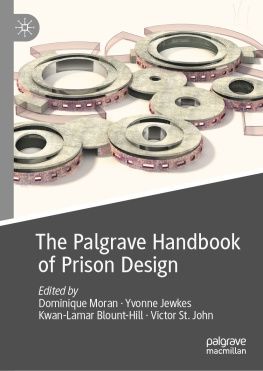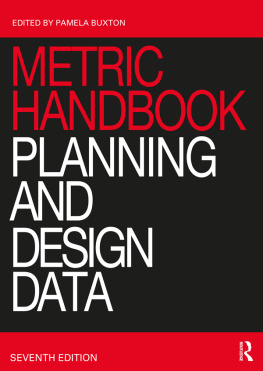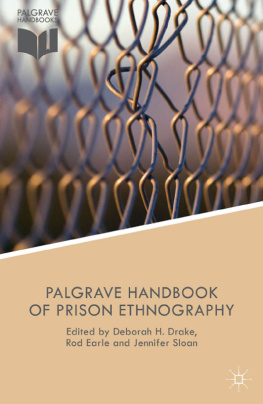Palgrave Studies in Prisons and Penology
Series Editors
Ben Crewe
Institute of Criminology, University of Cambridge, Cambridge, UK
Yvonne Jewkes
Social & Policy Sciences, University of Bath, Bath, UK
Thomas Ugelvik
Faculty of Law, University of Oslo, Oslo, Norway
This is a unique and innovative series, the first of its kind dedicated entirely to prison scholarship. At a historical point in which the prison population has reached an all-time high, the series seeks to analyse the form, nature and consequences of incarceration and related forms of punishment. Palgrave Studies in Prisons and Penology provides an important forum for burgeoning prison research across the world.
Series Advisory Board
Anna Eriksson (Monash University)
Andrew M. Jefferson (DIGNITY - Danish Institute Against Torture)
Shadd Maruna (Rutgers University)
Jonathon Simon (Berkeley Law, University of California)
Michael Welch (Rutgers University)
Editors
Dominique Moran , Yvonne Jewkes , Kwan-Lamar Blount-Hill and Victor St. John
The Palgrave Handbook of Prison Design

The Palgrave Macmillan logo.
Editors
Dominique Moran
School Geography, Earth and Environmental Sciences, University of Birmingham, Birmingham, UK
Yvonne Jewkes
Social & Policy Sciences, University of Bath, Bath, Somerset, UK
Kwan-Lamar Blount-Hill
Arizona State University, Phoenix, AZ, USA
Victor St. John
Saint Louis University, St Louis, MO, USA
ISSN 2753-0604 e-ISSN 2753-0612
Palgrave Studies in Prisons and Penology
ISBN 978-3-031-11971-2 e-ISBN 978-3-031-11972-9
https://doi.org/10.1007/978-3-031-11972-9
The Editor(s) (if applicable) and The Author(s), under exclusive license to Springer Nature Switzerland AG 2023
This work is subject to copyright. All rights are solely and exclusively licensed by the Publisher, whether the whole or part of the material is concerned, specifically the rights of translation, reprinting, reuse of illustrations, recitation, broadcasting, reproduction on microfilms or in any other physical way, and transmission or information storage and retrieval, electronic adaptation, computer software, or by similar or dissimilar methodology now known or hereafter developed.
The use of general descriptive names, registered names, trademarks, service marks, etc. in this publication does not imply, even in the absence of a specific statement, that such names are exempt from the relevant protective laws and regulations and therefore free for general use.
The publisher, the authors, and the editors are safe to assume that the advice and information in this book are believed to be true and accurate at the date of publication. Neither the publisher nor the authors or the editors give a warranty, expressed or implied, with respect to the material contained herein or for any errors or omissions that may have been made. The publisher remains neutral with regard to jurisdictional claims in published maps and institutional affiliations.
Cover illustration: OOIIO Architects
This Palgrave Macmillan imprint is published by the registered company Springer Nature Switzerland AG
The registered company address is: Gewerbestrasse 11, 6330 Cham, Switzerland
Praise for The Palgrave Handbook of Prison Design
Asking the question what works in prison design and often in response chronicling what doesn't, this comprehensive volume provides a detailed and nuanced review of the progression of penal architecture over the last two hundred years culminating in recent designs centred around a utopian vision of the rehabilitative institution. With a mirage of individual perspectives carefully selected and combined into this wide-ranging handbook, it is set to become a key reference source for researchers, architects and custodial jurisdictions going forward.
Alex Newman, RAIA B.Arch BA Arch, Director, Xsquared Architects, Australia
Prison design is a moral maze, plagued by questions such as whether such a thing as a good prison is even possible. Yvonne Jewkes and Dominique Moran, Britain's pre-eminent prison scholars team up with experts from the US, Kwan-Lamar Blount-Hill and Victor St John to edit a compendium of cross-disciplinary knowledge that explores these questions with rigour and insight. Historically, prison design has been selective about the critical theories that it has attempted to incorporate so that even well-intentioned strategies have meant that human misery is baked into the architecture of one of the least adaptable types of building. By bringing together contributions from a much broader range of knowledge than ever before a new, more intellectually agile approach emerges that offers practical methods of inquiry rather than solutions. Like all good design, the further one takes this inquisitive approach, the more sophisticated and responsive the outcome will be. Throughout, the question of whether designing an inherently harmful space in a better way is a good or bad thing is at the fore. Whatever the reader's conclusion, they should not reach it before reading this book.
Roland Karthaus, Associate Professor in Architecture, University of East London, UK
The Palgrave Handbook of Prison Design offers a broad and varied set of perspectives on the design of detention environments. It includes many chapters that need to be read by anyone who is a designer of prisons, or who hires and sets policy for such facilities. Chapters by important scholars address difficulties encountered in historical and current prison design (such as That Time We Tried to Build the Perfect Prison, What works least, Architecture and Design of the Communist and Post-Communist Prison) as well as thoughtful essays on positive approaches (The Creative Prison Revisited, Designing a Rehabilitative Prison Environment, Guidelines for Designing Health-Promoting Correctional Environments). The various sections of this volume consider why detention facilities are the way they are, how they can be evaluated and studied, and how they can be made better. They include primary data from case studies as well as literature reviews and conceptual models. Issues critical to environment and behavior in total institutions are addressed, such as the importance of access to nature for people in restrictive settings. Since incarceration is often the end product of the way western legal and justice systems operate, an important chapter also considers an alternative approach of rehabilitative justice. Questions about designing for youth and considerations of gender in detention facilities have been too little considered in the design-research literature, so the attention given to these here is very welcome. Youth facility issues are the focus of three chapters, and another discusses gender inconsiderations of carceral space. This book offers the kind of thoughtful discussion about difficult issues that goes beyond simple prescriptions for spatial layout and features, in ways that should be important to anyone who is interested in how we incarcerate peoplewhich is really all of us as citizen-owners of these facilities.












